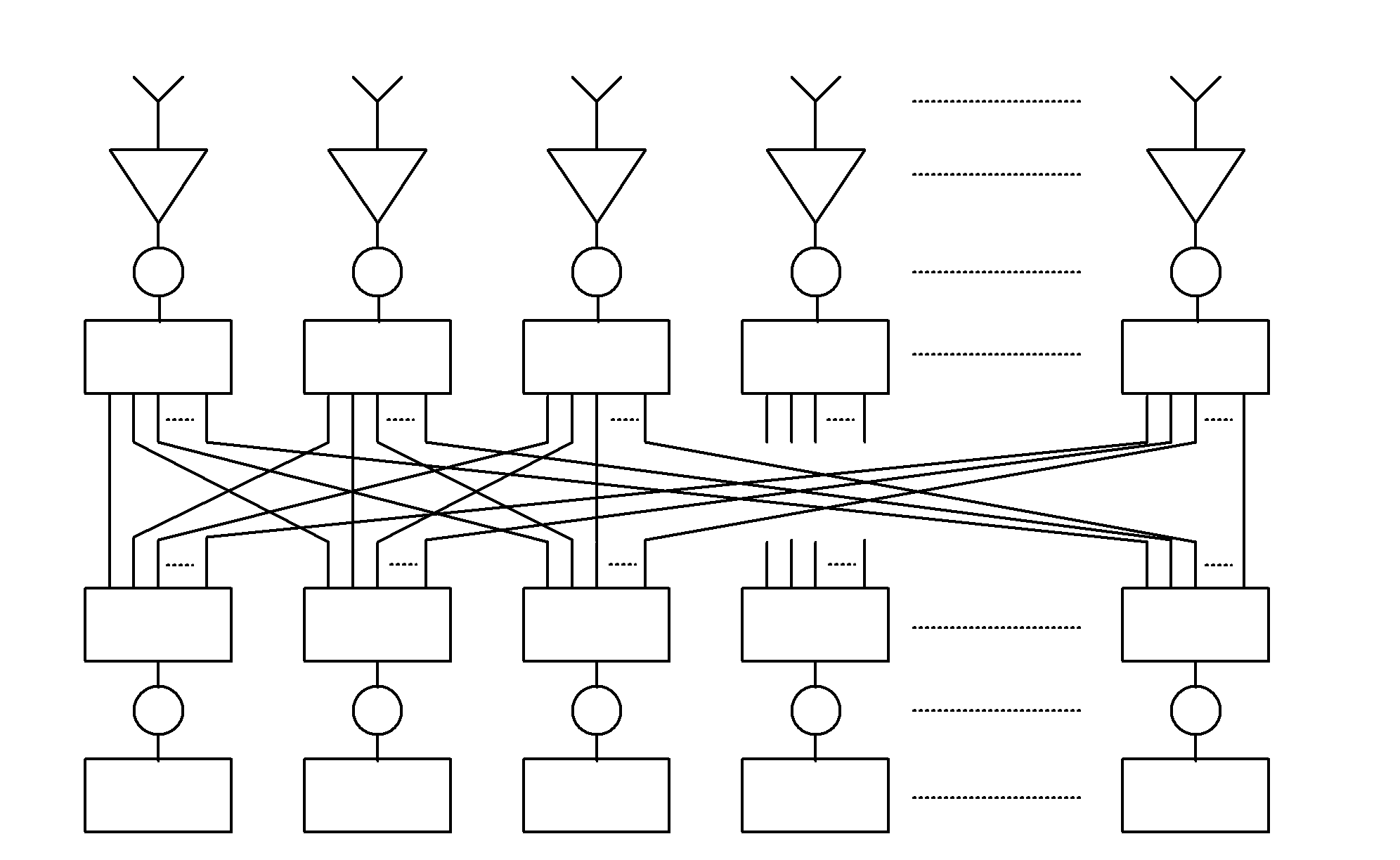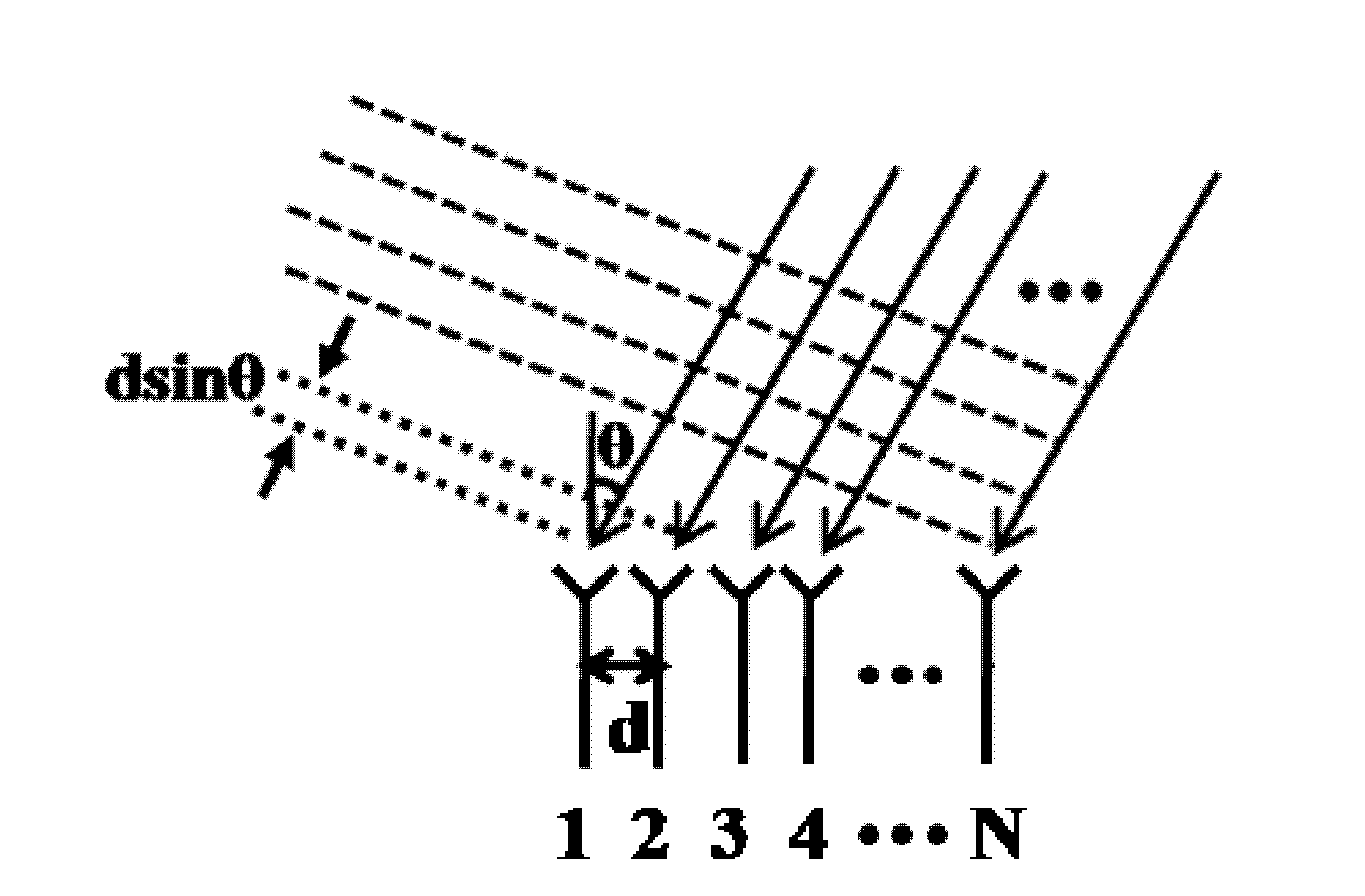Light control microwave beam receiving system
A receiving system and microwave beam technology, applied in the field of microwave photonics, can solve problems such as unsuitable for practical application, large and complex system structure, etc., and achieve the effect of improving mobile communication performance, simplifying system structure, and simple system structure
- Summary
- Abstract
- Description
- Claims
- Application Information
AI Technical Summary
Problems solved by technology
Method used
Image
Examples
Embodiment 1
[0031] figure 2 It is a schematic structural diagram of the optically controlled microwave beam receiving system described in the first embodiment of the present invention. Such as figure 2 As shown, the system includes N antenna units 36, where N is a natural number greater than 1, for independently receiving microwave signals 35 from multiple directions in space. The N antenna units 36 are distributed on a straight line, and the same spacing is maintained between adjacent antenna units 36 .
[0032] The antenna unit 36 is connected to the first input end of the optical modulator 38, the first input end is an electrical signal port, the second input end of the optical modulator 38 is connected to the laser source 37, and the second input end is Optical signal input port. The optical modulator 38 adopts a lithium niobate electro-optic modulator, receives the microwave signal 35 at the first input end, and performs intensity modulation on the laser signal coming in from ...
Embodiment 2
[0044] Figure 5 It is a structural schematic diagram of the optically controlled microwave beam receiving system described in the second embodiment of the present invention. Such as Figure 5 As shown, the structure of the system described in this embodiment is basically the same as that of the system described in the first embodiment. The only difference is that the optical coupler 39 is replaced by a combiner 42 and a splitter 43. combination. The combiner 42 includes N input terminals and 1 output terminal, which is used to combine and output the N optical signals output by the optical modulator 38 to the splitter 43; the splitter 43 includes 1 input terminals and M output terminals, used to receive the output of the combiner 42 and redistribute it to the M output terminals of the splitter 43.
[0045] In the optically controlled microwave beam receiving system described in the embodiment of the present invention, by using N optical modulators that output lasers of diff...
PUM
 Login to View More
Login to View More Abstract
Description
Claims
Application Information
 Login to View More
Login to View More - R&D
- Intellectual Property
- Life Sciences
- Materials
- Tech Scout
- Unparalleled Data Quality
- Higher Quality Content
- 60% Fewer Hallucinations
Browse by: Latest US Patents, China's latest patents, Technical Efficacy Thesaurus, Application Domain, Technology Topic, Popular Technical Reports.
© 2025 PatSnap. All rights reserved.Legal|Privacy policy|Modern Slavery Act Transparency Statement|Sitemap|About US| Contact US: help@patsnap.com



